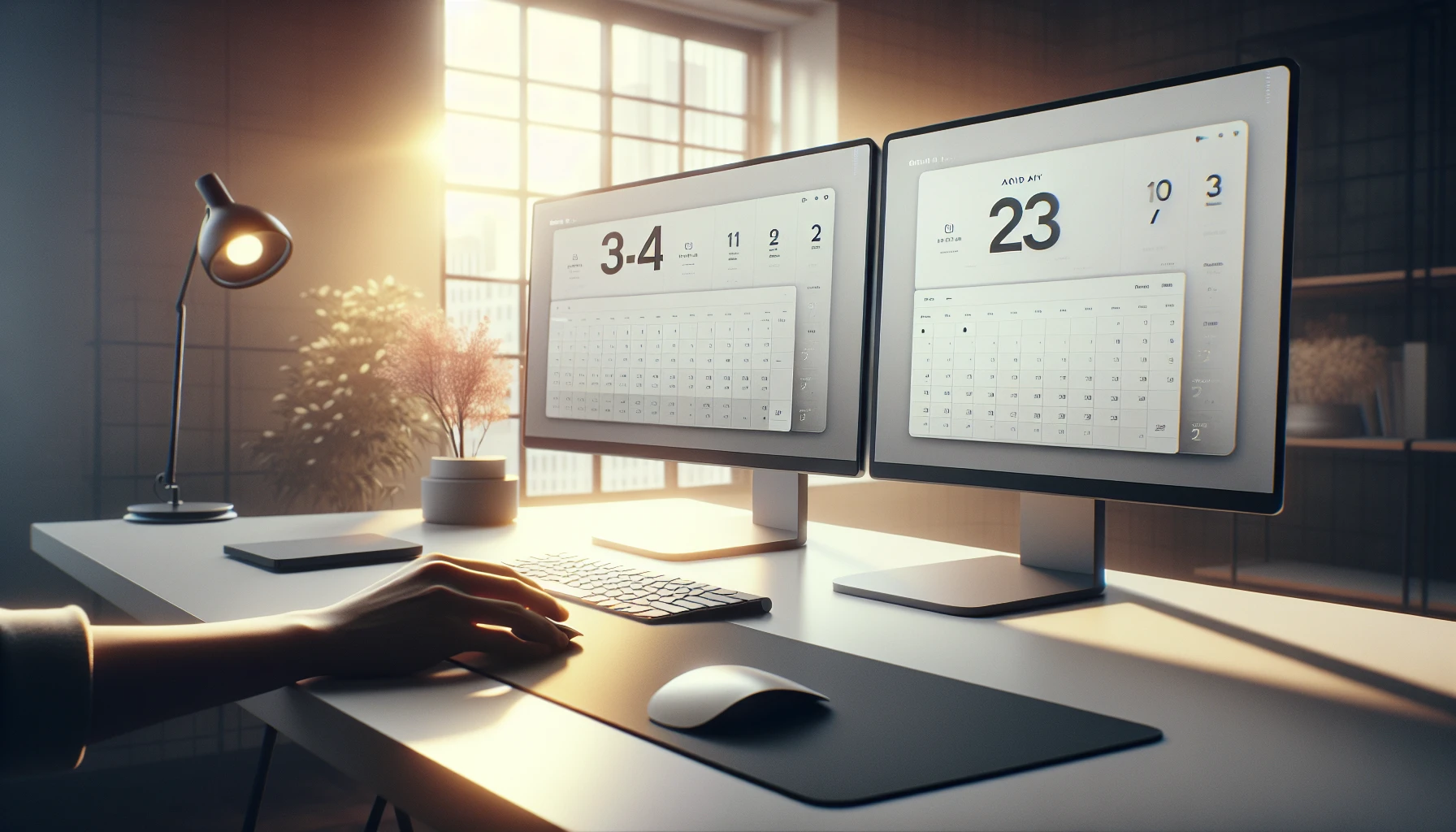· Ricardo Batista · 14 min read
Effective Agenda Template for Meetings
Learn how to create effective meeting agendas with customizable templates.

Meeting plans are crucial tools for arranging & leading productive gatherings. A carefully made schedule establishes the tone, keeps talks focused, & ensures all significant subjects are covered. In this piece, we’ll look at why meeting plans matter & provide insights into making a thorough schedule for different kinds of meetings.
Key Takeaways
- Meeting agendas are essential for organizing and running effective meetings.
- Creating a customizable meeting agenda template can streamline meeting preparation and ensure consistency.
- Tailoring meeting agendas to different meeting types is crucial for maximizing productivity.
- Finest methods for utilizing gathering plans incorporate dispersing the plan ahead of time & empowering dynamic cooperation.
- Examples of meeting agenda templates include business meeting agendas and project meeting agendas.
Introduction to Meeting Agendas
What is a Meeting Agenda?
A schedule plan is a structured overview of the subjects & activities that’ll be talked about during a gathering. It acts as a guide, leading attendees through the meeting’s goals & making sure all needed points are covered. A well-made agenda helps keep the meeting focused, organized, & efficient. It usually includes the meeting’s reason, a list of topics to be discussed, the time given for each topic, & any prep stuff or actions needed from attendees.
Importance of a Meeting Agenda
• The significance of a gathering plan can’t be exaggerated. Here are some essential reasons why possessing a meeting schedule is vital:
- Maintains Gatherings Organized: A plan assists in keeping the get-together concentrated on the crucial subjects, avoiding diversions & making sure the meeting remains on time.
- Allows Involvement: Through sharing the schedule beforehand, attendees are able to get ready for the gathering, adding more valuably to the talks.
- Explains Goals: A schedule obviously lays out the gathering’s aims, assisting attendees to comprehend the reason & anticipated results.
- Enhances Time Handling: Designating particular time frames for every subject assists in managing the gathering duration productively, guaranteeing that all crucial matters get covered.
- Facilitates Follow-Up: A well-documented agenda serves as a reference for follow-up actions and accountability.
To make an awesome meeting plan, you could utilize various tools & templates. For example, Meeting Reminders provides a Google Calendar add-on that not just assists in setting up meeting agendas but also notifies attendees when they aren’t showing up, saving you the trouble of manually emailing them every time they’re late. This tool is particularly handy for ensuring that all participants are reminded of the meeting & its agenda, thereby boosting overall meeting productivity.
For more in-depth instructions on making meeting schedules, you could refer to our agenda for meeting template guide. This guide offers templates that you can simply copy-paste & modify based on your requirements. Additionally, you could explore other tools like Asana or ClickUp for more sophisticated project management & meeting schedule resources.
Key Components of a Meeting Agenda
Basic Elements
A properly-arranged gathering schedule incorporates various basic parts that guarantee the meeting proceeds smoothly & productively. Here are the crucial components:
- Meeting Title: Clearly state the purpose of the meeting.
- Date and Time: Specify when the meeting will take place.
- Location: Show if the gathering is face-to-face or online, & give the needed info (like a video call connection or physical spot).
- Attendees: List all participants expected to attend the meeting.
- Objectives: Outline the main goals of the meeting to keep everyone focused.
- Agenda Items: Break down the meeting into specific topics or activities, each with a brief description.
- Time Allocation: Assign a specific amount of time to each agenda item to ensure the meeting stays on track.
- Preparation: Mention any materials or actions participants need to prepare before the meeting.
Advanced Elements
For more complex or recurring meetings, you might want to include advanced elements in your agenda:
- Duties & Tasks: Allocate jobs like coordinator, recorder, & time-manager to guarantee the gathering proceeds effortlessly.
- Discussion Points: Provide detailed points for discussion under each agenda item to guide the conversation.
- Stuff To Do: Mention any jobs or moves that have to be finished after the gathering, alongside the liable individual & due date.
- Backing Papers: Connect or hyperlink to any files, reports, or presentations that will get referenced throughout the gathering.
- Follow-Up Meetings: Schedule any necessary follow-up meetings and include them in the agenda.
To make an awesome meeting plan, you could utilize different tools & resources. For example, Meeting Reminders provides a Google Calendar add-on that not just assists in setting up meeting agendas but also notifies attendees when they aren’t showing up. This feature saves you the trouble of manually emailing them every time they’re late, ensuring that all participants are reminded of the meeting & its agenda.
For more in-depth instructions on making meeting schedules, you could refer to our agenda for meeting template guide. This guide offers templates that you can simply copy-paste & modify based on your requirements. Additionally, you could explore other tools like Asana or ClickUp for more sophisticated project management & meeting schedule resources.
How to Create a Meeting Agenda Template
Step-by-Step Guide
- Recognize the Gathering Kind: Decide the sort of get-together (like, squad huddle, project update, client meet-up) to customize the plan suitably.
- Establish Goals: Unmistakably determine the purposes of the gathering. What do you intend to accomplish by the conclusion of the meeting?
- Outline Discussion Points: Divide the gathering into particular subjects or tasks. Every item ought to have a concise explanation.
- Allocate Time: Assign a specific amount of time to each agenda item to ensure the meeting stays on track.
- Allocate Responsibilities: Appoint duties like coordinator, recorder, & time manager to guarantee the gathering proceeds efficiently.
- Include Preparation Details: Mention any materials or actions participants need to prepare before the meeting.
- Add Follow-Up Actions: Include a section for action items and follow-up tasks to be completed after the meeting.
Here’s a simple template you can use:
# Meeting Title
**Date and Time**: [Insert Date and Time]
**Location**: [Insert Location or Virtual Meeting Link]
**Attendees**: [List of Participants]
## Objectives
- [Objective 1]
- [Objective 2]
## Agenda Items
1. **[Agenda Item 1]** - [Time Allocation]
- Description: [Brief Description]
2. **[Agenda Item 2]** - [Time Allocation]
- Description: [Brief Description]
## Roles and Responsibilities
- Facilitator: [Name]
- Note-Taker: [Name]
- Timekeeper: [Name]
## Preparation
- [Preparation Task 1]
- [Preparation Task 2]
## Follow-Up Actions
- [Action Item 1] - [Responsible Person] - [Deadline]
- [Action Item 2] - [Responsible Person] - [Deadline]Tools and Software
Several tools and software can help you create and manage meeting agendas effectively:
Meeting Reminders: This program provides a Google Calendar extension that assists with creating meeting plans & notifies participants when they aren’t arriving. It saves you the trouble of manually messaging them whenever they’re tardy, making sure all attendees are reminded about the gathering & its schedule.
Asana: Asana permits you to make projects for every gathering, utilize parts for plan things, and oversee undertakings & follow-ups proficiently.
ClickUp: ClickUp provides modifiable meeting schedule layouts, AI incorporation, & team cooperation capabilities. It’s an all-inclusive instrument for overseeing meetings & undertakings.
Google Docs: Google Docs is a straightforward yet effective instrument for generating & sharing meeting schedules. You can team up in real-time with your crew.
For more in-depth instructions on making meeting schedules, you could refer to our schedule for meeting example guide. This guide offers templates that you can simply copy-paste & modify based on your requirements. Additionally, you could explore other resources like how to compose a reminder message for a meeting for more advice on managing meeting communications.
Customizing Your Meeting Agenda Template
Tailoring to Different Meeting Types
Modifying your gathering schedule layout to suit diverse kinds of get-togethers is crucial for boosting output & making certain all pertinent subjects get addressed. Here’s how you can tweak your plan for various meeting categories:
- Crew Get-togethers: Concentrate on squad refreshes, undertaking headway, & any obstructions. Incorporate areas for every colleague to give their updates & examine any collective assignments.
- Client Gatherings: Highlight client requirements, project advancement, & deliverables. Incorporate a part for client input & any tasks that should be tended to.
- Project Commencement Gatherings: Summarize the undertaking’s extent, goals, & schedules. Incorporate parts for squad introductions, duties & obligations, and initial project chores.
- Idea Sharing Meetings: Make a changeable plan that permits open chat & thought creation. Have parts for establishing the situation, brainstorming tasks, & summing up main concepts.
- Progress Update Gatherings: Concentrate on advancement reports, forthcoming landmarks, & any difficulties that require resolution. Incorporate parts for every undertaking or assignment being examined.
Incorporating Team Feedback
Blending squad input into your gathering plan layout guarantees that it remains pertinent & productive. Here’s how you can accumulate & combine criticism:
- Request Opinions: Following every gathering, inquire from attendees for their thoughts on the schedule. You could utilize polls, response forms, or straightforward inquiries during the meeting.
- Examine Comments: Scrutinize the remarks to pinpoint frequent topics or proposals. Search for sections where the schedule could be enhanced or simplified.
- Modify the Layout: Do required changes to the plan based on the input. This could involve adding fresh parts, adjusting time distributions, or altering the sequence of agenda points.
- Examine & Repeat: Put into practice the revised layout in your upcoming gathering & keep on collecting opinions. Repeatedly enhance the layout to guarantee it satisfies the requirements of your squad.
Utilizing instruments like Meeting Reminders could assist in streamlining this procedure. Meeting Reminders provides a Google Calendar add-on that not just aids in establishing meeting plans but additionally notifies participants when they aren’t appearing. This capability saves you the trouble of manually emailing them every instance they’re tardy, guaranteeing that all attendees are reminded of the gathering & its schedule.
For more in-depth instructions on making & tailoring meeting schedules, you could refer to our agenda for meeting template guide. This guide offers templates that you can simply copy-paste & modify based on your requirements. Additionally, you could explore other resources like how to compose a reminder email for a meeting for more advice on managing meeting communications.
Best Practices for Using Meeting Agendas
Ensuring Participation
• Ensuring lively involvement during gatherings is vital for their triumph. Here are a few top-notch methods to motivate participation:
- Spread the Plan Ahead: Distribute the gathering schedule with attendees no less than 24 hours prior to the meeting. This permits them opportunity to get ready & contribute significantly.
- Allocate Responsibilities: Appoint duties like moderator, recorder, & time manager to engage attendees actively during the gathering.
- Motivate Contribution: Urge attendees to propose agenda points or subjects for deliberation. This could be accomplished via a pre-gathering poll or a collaborative file.
- Establish Obvious Goals: Evidently describe the aims & anticipated results of the gathering in the schedule. This assists attendees in comprehending their part and the significance of their input.
Using tools like Meeting Reminders can assist guarantee participation by notifying attendees when they aren’t appearing. This capability saves you the trouble of manually emailing them every time they’re tardy, ensuring that all participants are reminded of the gathering & its schedule.
Keeping Meetings on Track
• Keeping get-togethers organized is crucial for upholding efficiency & valuing attendees’ time. Here are some tactics to accomplish this:
- Adhere to the Schedule: Pursue the plan attentively & evade straying from the intended subjects. If fresh matters surface, record them for deliberation in an upcoming gathering.
- Handling Time: Designate particular time periods for every schedule item & stick to them. Utilize a timer or a timekeeper to guarantee that conversations don’t go over.
- Recap Main Ideas: After every topic, sum up the crucial ideas & any choices made. This assists in keeping the gathering centered & guarantees everybody’s on a similar wavelength.
- Stuff To Do: Evidently lay out any tasks & give duties. This makes sure that follow-up jobs get tracked & finished.
For more in-depth instructions on generating & handling meeting schedules, you could refer to our agenda for meeting template guide. This guide offers templates that you can simply copy-paste & modify based on your requirements. Additionally, you could explore other resources like how to compose a reminder email for a meeting for more advice on managing meeting communications.
By adhering to these optimal strategies, you can guarantee that your gatherings are fruitful, concentrated, and captivating for every attendee.
Examples of Meeting Agenda Templates
Business Meeting Agenda
A business meeting schedule is intended to maintain conversations concentrated on organization objectives, execution measurements, & key preparation. Here’s a straightforward layout you could utilize:
# Business Meeting Agenda
**Date and Time**: [Insert Date and Time]
**Location**: [Insert Location or Virtual Meeting Link]
**Attendees**: [List of Participants]
## Objectives
- Review quarterly performance
- Discuss upcoming projects
- Address any team concerns
## Agenda Items
1. **Welcome and Introductions** - 10 minutes
2. **Quarterly Performance Review** - 30 minutes
- Sales figures
- Key achievements
3. **Upcoming Projects** - 20 minutes
- Project A overview
- Project B timeline
4. **Team Concerns and Feedback** - 15 minutes
5. **Action Items and Next Steps** - 10 minutes
## Roles and Responsibilities
- Facilitator: [Name]
- Note-Taker: [Name]
- Timekeeper: [Name]
## Preparation
- Review quarterly performance report
- Prepare updates on current projectsBoard Meeting Agenda
Board gatherings necessitate a more official framework, concentrating on administration, monetary supervision, & strategic orientation. Here’s a layout for a board assembly:
# Board Meeting Agenda
**Date and Time**: [Insert Date and Time]
**Location**: [Insert Location or Virtual Meeting Link]
**Attendees**: [List of Board Members]
## Objectives
- Review financial statements
- Discuss strategic initiatives
- Approve key decisions
## Agenda Items
1. **Call to Order and Roll Call** - 5 minutes
2. **Approval of Minutes from Last Meeting** - 10 minutes
3. **Financial Report** - 20 minutes
- Income statement
- Balance sheet
4. **Strategic Initiatives** - 30 minutes
- Initiative A progress
- Initiative B planning
5. **New Business** - 15 minutes
6. **Adjournment** - 5 minutes
## Roles and Responsibilities
- Chairperson: [Name]
- Secretary: [Name]
- Treasurer: [Name]
## Preparation
- Review financial statements
- Prepare updates on strategic initiativesProject Meeting Agenda
Project meetings focus on following progress, dealing with problems, & arranging upcoming moves. Here’s a layout for a project gathering:
# Project Meeting Agenda
**Date and Time**: [Insert Date and Time]
**Location**: [Insert Location or Virtual Meeting Link]
**Attendees**: [List of Project Team Members]
## Objectives
- Review project progress
- Identify and resolve issues
- Plan next steps
## Agenda Items
1. **Welcome and Introductions** - 5 minutes
2. **Project Status Update** - 20 minutes
- Milestones achieved
- Current tasks
3. **Issue Resolution** - 15 minutes
- Discuss any roadblocks
- Plan solutions
4. **Next Steps and Action Items** - 10 minutes
5. **Q&A and Feedback** - 10 minutes
## Roles and Responsibilities
- Project Manager: [Name]
- Note-Taker: [Name]
- Timekeeper: [Name]
## Preparation
- Update project management tool
- Prepare status reportsUtilizing instruments like Meeting Reminders could assist guarantee that every participant gets reminded regarding the gathering & its plan. Meeting Reminders provides a Google Calendar add-on which notifies attendees when they aren’t appearing, saving you the trouble of manually messaging them each time they’re tardy.
For more in-depth instructions on making meeting schedules, you could refer to our schedule for meeting example guide. This guide offers templates that you can simply copy-paste & modify based on your requirements. Additionally, you can explore other resources like how to compose a reminder message for a meeting for more advice on managing meeting communications.
Conclusion
In conclusion, making a well-put-together meeting plan layout is vital for guaranteeing productive & efficient gatherings. By adhering to the steps described in this piece, you can create a customizable agenda that satisfies the particular requirements of your meetings. Integrating crucial components like meeting goals, agenda topics, & time allocations can assist in keeping discussions focused & maximize participant involvement. Recollect to customize your agenda template to various meeting kinds & follow best practices to enhance meeting effectiveness. Utilizing customizable meeting agenda templates can simplify your meeting prep process & lead to more prosperous results. Begin implementing these tactics now to raise the caliber of your meetings & accomplish your intended objectives.
Conclusion
Frequently Asked Questions (FAQs)
What are the benefits of using a customizable meeting agenda template?
Utilizing a modifiable gathering plan layout assists with keeping gatherings coordinated, guarantees all subjects are covered, & upgrades generally speaking gathering proficiency.
How can I tailor a meeting agenda template to different types of meetings?
To modify a gathering schedule layout to various sorts of gatherings, think about the particular goals, members, and subjects pertinent to every gathering type.
Are there any tools available to create meeting agenda templates?
Yes, there are various tools available online, such as Canva and Lucidpress, that offer customizable meeting agenda template designs.
What key components should a meeting agenda template include?
A schedule outline template ought to incorporate crucial components like the gathering title, date & time, rundown of subjects or plan things, designated time for every thing, and subtleties on gathering members.
How can I encourage active participation using a meeting agenda template?
To motivate energetic involvement, distribute the gathering plan ahead of time, designate time for conversations, & guarantee that every participant has the chance to add to the meeting subjects.



